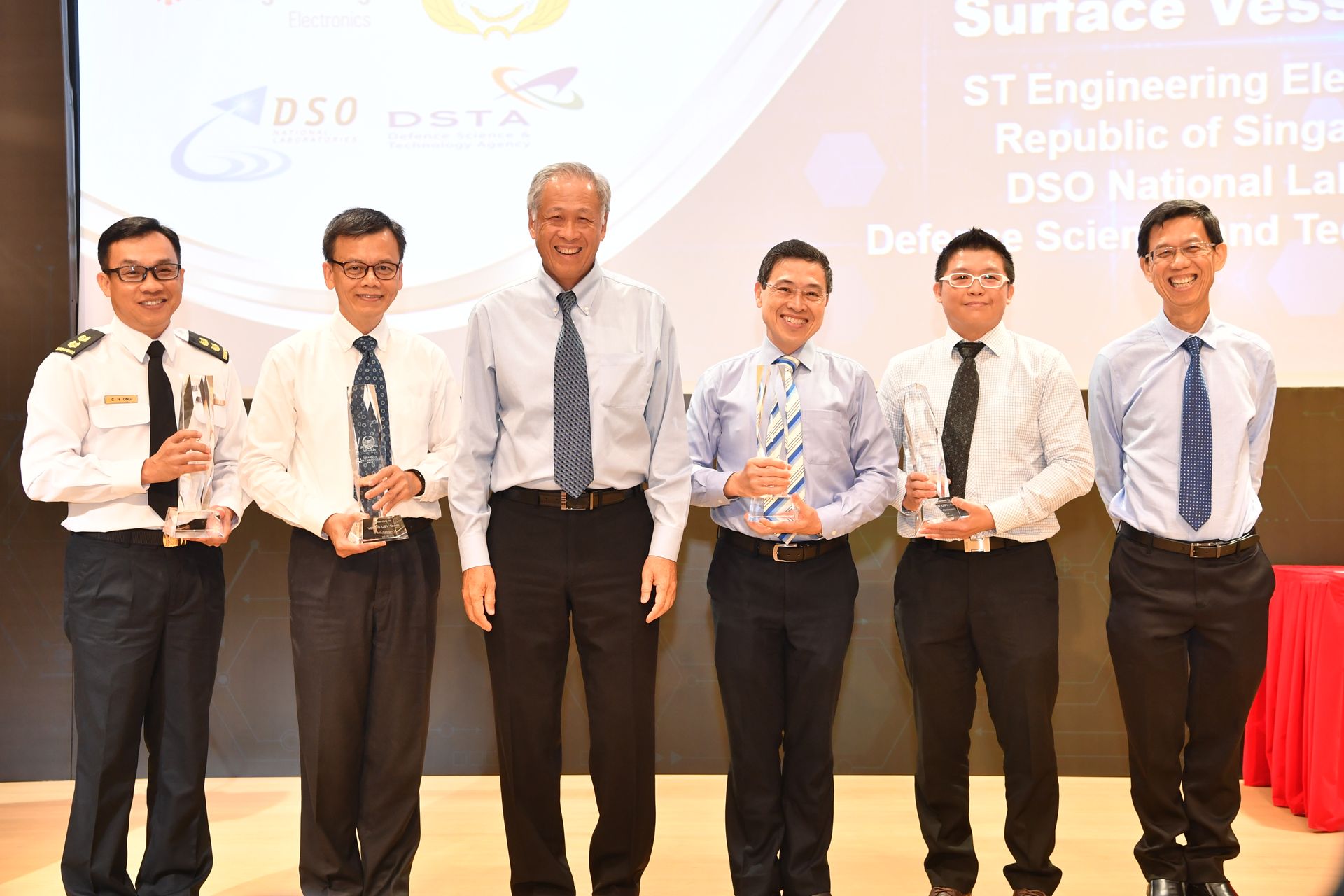Equipped with a wide range of sensors, including a combination of electro-optical and radar sensors, the Venus Unmanned Surface Vessel (USV) is fully autonomous and customised to operate in Singapore’s busy waters.
“It uses navigation sensors to build situational awareness, and to identify potential obstacles. It is equipped with two perception layers which are capable of tracking any surface obstacle,” said Mr Ho Kah Tong from ST Engineering Electronics.
The Venus USV is able to perform mine-countermeasure and maritime security missions with just one-tenth the manpower and at a much lower cost compared with manned naval ships.
The Venus USV Team began developing the USV back in 2008, and has worked on several research and technology programmes related to autonomous navigation intelligence and mission applications in the process.
In recognition of their contributions towards Singapore’s defence, the Venus USV Team received the Defence Technology Prize (DTP) 2018 Team (Research & Development) Award.
They were among the three individual and four team winners, from both the Defence Science and Technology Agency (DSTA) and the DSO National Laboratories, who were awarded at the ceremony held on 30 Oct at DSO.
Speaking at the ceremony, Minister for Defence Dr Ng Eng Hen highlighted the importance of strategic trust.
Of such trust among countries, he said: “Strategic trust, I think, goes beyond communication and engagement… Strategic trust speaks of a deep understanding of each other’s core interests.”
Alluding to the relationship between the Defence Technology Community and the Ministry of Defence (MINDEF) and the Singapore Armed Forces (SAF), he said: “If it (strategic trust) is important between different countries, how important is it between different departments and organisations within the MINDEF/SAF family – MINDEF, DSTA, DSO, ST?
“Without that strategic trust, progress for our common cause to defend Singapore will be limited, even as lofty and worthy as that goal is.”
On the use of technology in Singapore’s defence, Dr Ng noted that “internal resource constraints as well as the complexity of external threats means that we must find new heights to ascend to fulfill our missions”.
Dr Ng’s words were not lost on Professor Gan Chee Lip, the Director of Temasek Laboratories @ Nanyang Technological University (NTU). He has led the Hardware Assurance team at the laboratories to develop physical and circuit analysis techniques and software for advanced integrated circuit chips against hardware Trojans.
A hardware Trojan is a harmful modification of the circuitry of an integrated circuit. In layman terms, these hardware Trojans are planted in security-weak parts of a chip in a device, with the intention of stealing internal sensitive data or modifying the device’s original functionality.
“Everyone is more familiar with software malware in cybersecurity, but a software requires hardware electronics to function. However, hardware Trojan is not unexpected,” said Professor Gan, who received the DTP 2018 Individual (Research & Development) Award.
“Since the early 2000s, there have been reports of hardware Trojans being manipulated in systems, and recently, this concern has been increasing. As we move towards the Internet of Things, almost everything will be connected and all these devices would have an electronic chip embedded. Therefore, if any part of a system is compromised, it might compromise the whole system.”
Thus, the capabilities provided by the Hardware Assurance team led by Professor Gan are essential in protecting against malicious modifications to Singapore’s defence networks, and ensuring the trustworthiness of the electronics used in defence systems.
Comprising of members from DSTA, DSO and the Republic of Singapore Air Force (RSAF), the Integrated Strike Command and Control (C2) System Team was awarded the DTP 2018 Team (Engineering) Award for their C2 system.
The Integrated Strike C2 System enables the SAF to strike as one. Incorporated with sensors and shooters, the system is able to generate a comprehensive live situational picture and allows for rapid response during target engagement.
Acting as the nerve centre of the SAF Command Post, the system helps to shorten the overall sensor-to-shooter cycle (from the time target information is picked up by sensors to the neutralisation of targets). It also integrates information such as landmarks into live unmanned aerial vehicle video feeds to provide real-time updates of the ground situation picture.
Designed to be configurable and scalable, new components supporting various exercise entities can be integrated into the existing C2 system architecture, allowing the SAF to execute complex scenarios.
Established in 1989, the DTP is awarded annually to individuals and teams who have made significant contributions to the defence capability of Singapore. The DTP also serves to foster technological innovation and encourage breakthroughs in defence science and technology.
